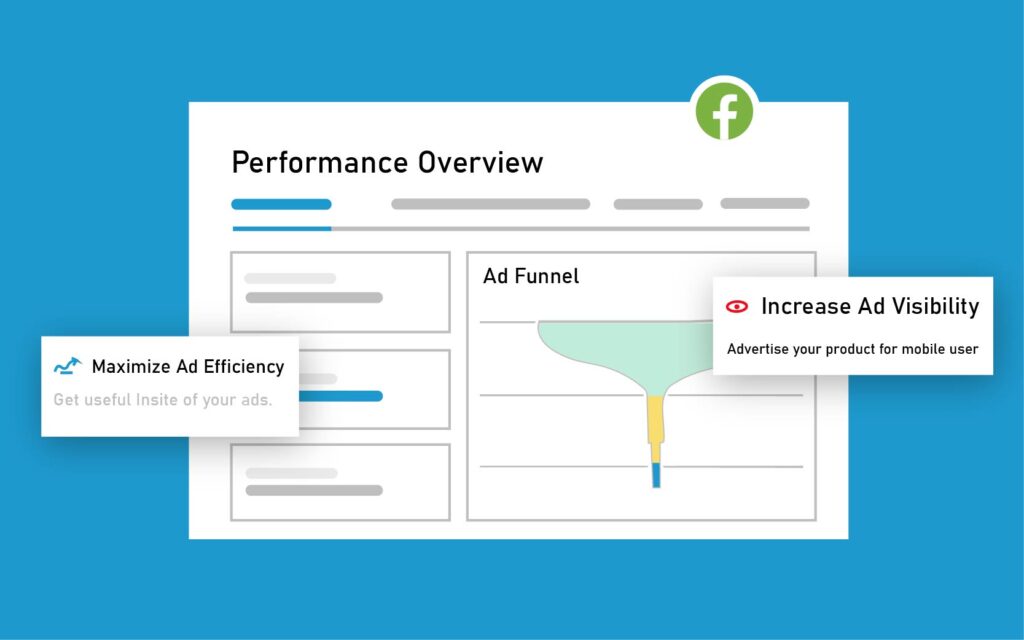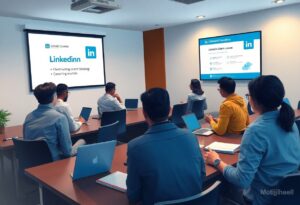
LinkedIn Client Hunting Course in Mohakhali
LinkedIn is more than just a platform for networking; it’s a powerful tool for finding

If you want my team to manage your good marketing for you, click here
Over the past few years, I’ve discovered the immense potential LinkedIn holds for expanding professional networks and attracting new clients. In this blog post, I’ll share insights from my experience with the LinkedIn Client Hunting Course in Nikunja. You’ll learn how to effectively leverage your LinkedIn profile, optimize your outreach strategies, and connect with potential clients in a meaningful way. By the end, you’ll have the tools necessary to enhance your client acquisition efforts on this powerful platform.
The power of LinkedIn in client hunting cannot be overstated. As a comprehensive networking platform, it allows you to connect with potential clients, showcase your expertise, and engage with relevant industries. By mastering LinkedIn, you can expand your reach and enhance your business development efforts significantly.
LinkedIn plays a pivotal role in business development by serving as a hub for professionals. This platform enables you to identify and connect with decision-makers, join industry-specific groups, and establish your authority through thought leadership. Engaging effectively can lead to fruitful relationships and new business opportunities.
One of the standout features of LinkedIn is its impressive networking capabilities. You can leverage various tools to enhance your outreach and connections. Key features include:
Any professional can utilize these features to expand their network and opportunities.
With LinkedIn’s networking features, I find it easy to connect with industry peers and potential clients. By focusing on building meaningful relationships, you can actively participate in discussions, share valuable content, and engage with your audience. Key functionalities include:
Any engagement you create improves your visibility and connection potential.
Some of the key elements of a strong LinkedIn profile include a professional photo, a well-crafted headline, and a clear summary. Each component plays a significant role in portraying your professional image and attracting the right opportunities. By effectively showcasing your expertise and experience, you can stand out in a crowded marketplace and connect with potential clients.
Below, I’ll emphasize the importance of creating a captivating headline and summary. Your headline should communicate your value proposition succinctly, while your summary allows you to elaborate on your skills and achievements. Make it personable, and weave in your passion for your industry.
Above all, your skills and recommendations are integral to validating your expertise. They offer social proof of your capabilities and help build trust with potential clients. By strategically selecting skills that align with your professional identity, you can enhance your profile’s effectiveness.
Considering your skills and recommendations, ensure that you request endorsements and testimonials from colleagues and clients. This not only boosts your credibility but also enhances your visibility on LinkedIn. By showcasing a diverse range of skills, you transform your profile into a powerful tool for attracting the right connections and opportunities.
You have the opportunity to connect with your ideal clients on LinkedIn, and understanding how to identify and target them is imperative for success. In this chapter, I will guide you through the steps to find and reach out to those individuals who are most likely to benefit from your services.
An effective strategy starts with clearly defining your target audience. This means thinking about their demographics, industries, and specific needs. Knowing who your ideal clients are allows you to tailor your approach and messaging effectively.
Against this backdrop, I can show you how to leverage LinkedIn’s advanced search filters to hone in on your ideal clients. Utilizing this feature can save you time and help you engage with the right prospects efficiently.
Advanced Search Filters Benefits
Filter by IndustryFocus on specific sectors relevant to your offerings.Location TargetingConnect with clients in your desired geographical area.Job TitlesDirectly reach decision-makers such as managers or executives.Company SizeIdentify startups, SMBs, or large corporations based on your criteria.
And as I utilize these advanced search filters, I can draft compelling messages that specifically speak to the needs and pain points of my targeted audience. Here are some best practices to enhance your outreach:
Tips for Effective Outreach
Craft a Compelling Subject LineEnsure it grabs the recipient’s attention immediately.Showcase ValueClearly explain how your services can solve their problems.Respect their TimeKeep communication concise and to the point.Be GenuineExpress sincere interest in their needs and goals.
Not every outreach strategy yields results, but by adopting effective techniques, you can enhance your LinkedIn client hunting efforts. Understanding your audience’s preferences and approaching them with well-thought-out plans will help you establish meaningful connections that lead to successful business opportunities.
Before sending a connection request on LinkedIn, I recommend taking the time to customize your message. Personalizing your outreach shows your genuine interest in the person you wish to connect with. By referencing mutual connections, shared interests, or specific details from their profile, you build rapport and increase the likelihood of a positive response.
An effective follow-up can significantly improve your chances of fostering a connection. After your initial message, wait a few days and then send a polite nudge, highlighting a fresh perspective or new information about your previous conversation. This demonstrates persistence without being pushy, reinforcing your commitment to building a professional relationship.
Another approach I find beneficial is to provide value in your follow-ups. Share relevant articles or insights that align with their interests or needs, which not only showcases your expertise but also keeps the conversation going. By nurturing the connection with useful content, you’re more likely to grab their attention and encourage them to engage further.
After establishing connections, nurturing relationships on LinkedIn becomes vital for sustained engagement and collaboration. I recommend actively interacting with your connections by sharing insights and providing value through discussions. This ongoing relationship-building will not only enhance your professional network but also position you as a trusted resource in your field.
At this stage, actively engaging with content and posts from your connections is vital. Liking, commenting, and sharing their updates can significantly enhance your visibility and foster a sense of community. By contributing meaningful insights, you amplify your presence and strengthen relationships within your network.
Nurturing trust involves consistent interaction with your connections on LinkedIn. This means regularly checking in, sending personalized messages, and responding to comments or inquiries. Such interactions demonstrate your commitment to maintaining the relationship, which ultimately leads to stronger ties and potential collaboration opportunities.
Plus, fostering trust goes beyond simple communication; it involves showing genuine interest in your connections’ professional journeys. I find that sharing relevant resources or offering assistance tailored to their needs can significantly enhance your rapport. Regular check-ins, whether through messages or comments, help maintain an open line of communication and reinforce your reliability as a contact.

All my efforts in client hunting on LinkedIn need to be assessed to understand what works and what doesn’t. Your strategies should evolve based on hard data and results to ensure that you’re always moving toward your goals. By measuring success and adapting your approach, you can maximize your LinkedIn networking potential and broaden your client base effectively.
An effective way to gauge your success is by tracking key performance indicators (KPIs). These metrics can include connection requests sent, response rates, engagement levels, and conversion rates. By quantifying these aspects, you can identify what strategies are paying off and which ones might need reevaluation. This approach keeps your efforts focused and aligns them with your business objectives.
For optimal results, you must be willing to adapt your strategies based on feedback and performance data. By continuously refining your approach, you can discover new tactics that resonate better with your audience.
The world of LinkedIn client hunting is dynamic, and what works today may not be as effective tomorrow. Stay attuned to changes in engagement and market trends, and be ready to make adjustments. Test different outreach messages, refine your profile, and explore new networking opportunities. This commitment to continuous improvement ensures you remain competitive and can build stronger relationships with potential clients over time.
Presently, as I reflect on the LinkedIn Client Hunting Course in Nikunja, I recognize its potential to transform the way you engage with your audience. By applying the strategies and insights gained from this course, you can effectively attract and connect with your ideal clients. I encourage you to take the lessons learned and implement them in your own LinkedIn strategy, enhancing your professional network and driving your business growth. Embrace this opportunity to navigate the digital landscape with confidence and purpose.
It is really a win-win situation 😲 for you to join the “Digital Wit Academy” Facebook group and gain the most updated information about different digital marketing strategies.

Kamrul Hassan is the founder and CEO of Digital Wit Academy. As you know, Digital Wit Academy is a fast-growing Bangla e-learning platform that provides quality knowledge and support to students. Kamrul Hassan is a government-certified Professional Digital Marketing Expert and a trainer/mentor in the Youth and sports ministry projects of the BD government. His Team Digital Wit Academy consists of well-educated and highly motivated core team members who are very friendly. They believe in quality support to make the students’ careers more successful. Support is the best part of the Digital Wit Academy courses.

Stop wasting money and unlock the hidden potential of your advertising skills with Digital Wit Academy.

LinkedIn is more than just a platform for networking; it’s a powerful tool for finding

Most professionals are aware of LinkedIn’s potential as a powerful tool for networking and client

Course participants will discover the art of leveraging LinkedIn client hunting to attract effectively. In

With the rise of digital networking, mastering LinkedIn for client acquisition has never been more

There’s an exciting opportunity for professionals seeking to enhance their networking skills through my LinkedIn
Hey, I’m Kamrul Hassan, the mastermind of Digital Wit. I’m confident to grow your brand. My only question is, will you grab the opportunity?